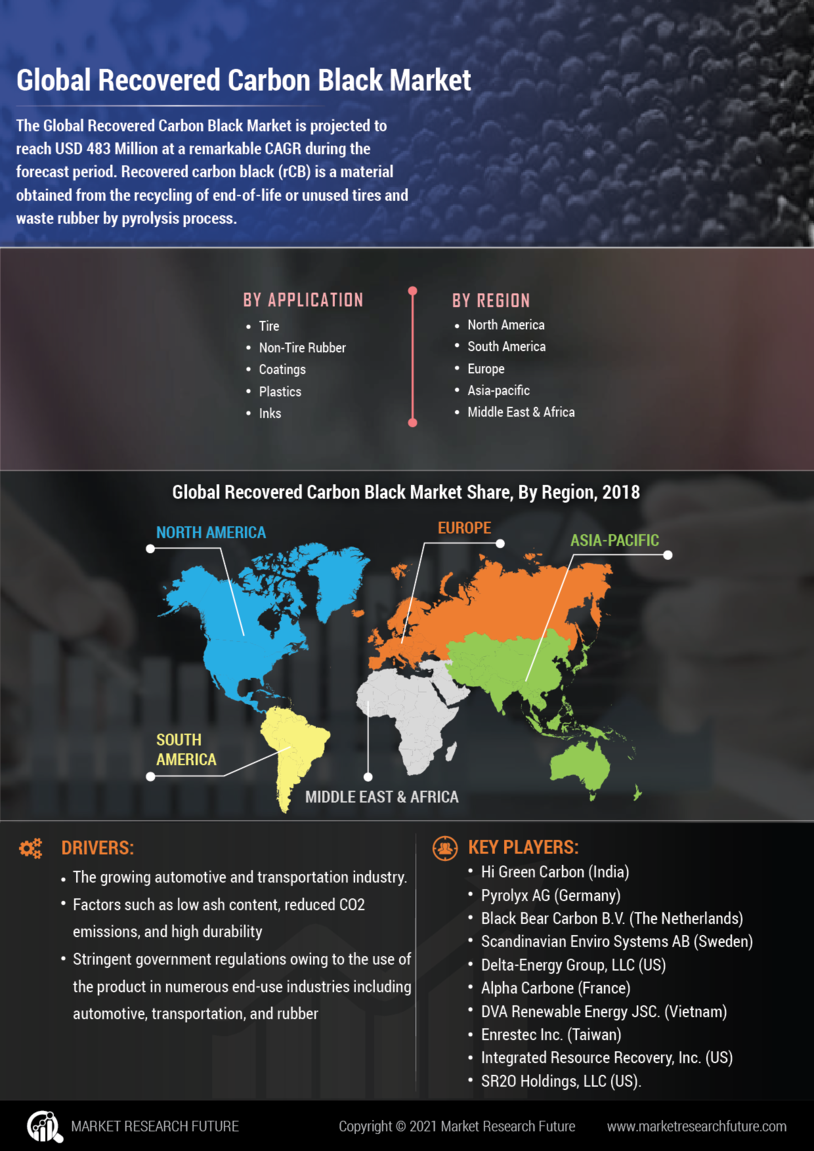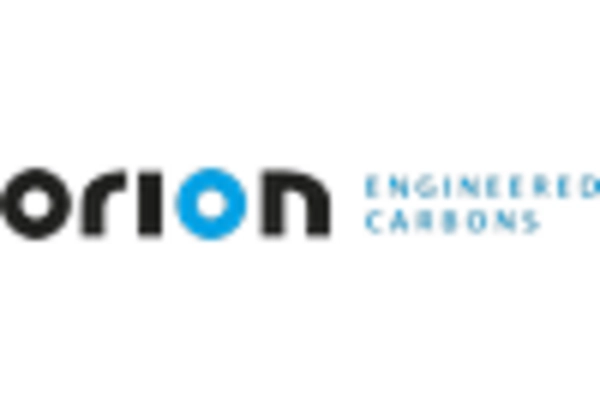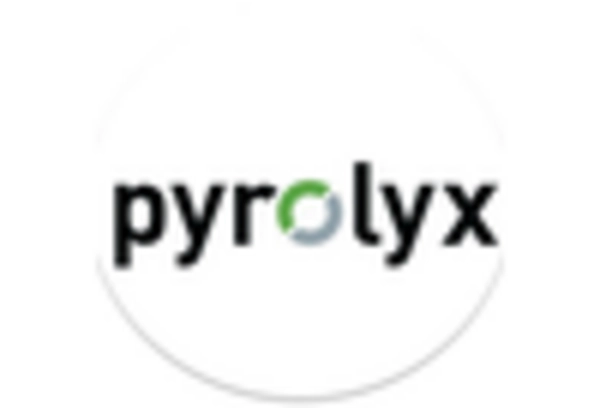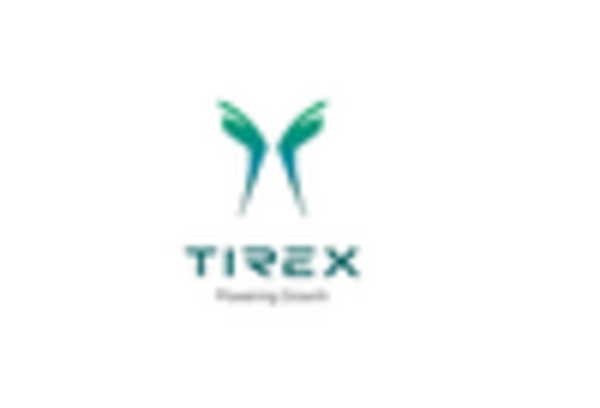Rising Prices of Virgin Carbon Black
The Recovered Carbon Black Market is witnessing a shift in dynamics due to the rising prices of virgin carbon black, which is primarily driven by fluctuations in crude oil prices and supply chain disruptions. As the cost of virgin carbon black escalates, manufacturers are increasingly turning to recovered carbon black as a cost-effective alternative. This trend is particularly evident in the tire manufacturing sector, where the incorporation of recovered carbon black can significantly reduce production costs without compromising quality. The price competitiveness of recovered carbon black is likely to enhance its market share, as more companies seek to optimize their material costs. Consequently, the Recovered Carbon Black Market stands to gain from this economic shift, potentially leading to increased adoption across various applications.
Regulatory Frameworks Favoring Recycling
The Recovered Carbon Black Market is benefiting from increasingly stringent regulatory frameworks that promote recycling and waste management. Governments are implementing policies aimed at reducing landfill waste and encouraging the recycling of materials, including rubber and carbon black. For instance, regulations mandating the recycling of end-of-life tires are becoming more common, creating a steady supply of feedstock for recovered carbon black production. This regulatory support not only fosters a favorable environment for market growth but also incentivizes manufacturers to adopt recovered carbon black in their products. The alignment of regulatory measures with market needs indicates a robust future for the Recovered Carbon Black Market, as compliance with these regulations becomes essential for industry players.
Growing Applications in Diverse Industries
The Recovered Carbon Black Market is expanding its footprint across various sectors, including automotive, construction, and consumer goods. The versatility of recovered carbon black allows it to be utilized in a wide range of applications, from tire manufacturing to coatings and plastics. As industries increasingly recognize the benefits of incorporating recovered carbon black into their products, the demand is expected to rise. For instance, the automotive sector is projected to account for a significant share of the market, driven by the need for lightweight and durable materials. This diversification of applications not only enhances the market's resilience but also indicates a promising trajectory for the Recovered Carbon Black Market, as it adapts to the evolving needs of different sectors.
Increasing Demand for Sustainable Materials
The Recovered Carbon Black Market is experiencing a notable surge in demand for sustainable materials, driven by heightened environmental awareness among consumers and manufacturers. As industries strive to reduce their carbon footprints, the adoption of recovered carbon black as a sustainable alternative to virgin carbon black is becoming increasingly prevalent. This shift is evidenced by the projected growth rate of the recovered carbon black market, which is anticipated to reach approximately 1.5 million metric tons by 2026. The emphasis on sustainability not only aligns with corporate social responsibility goals but also meets the growing regulatory pressures for eco-friendly practices. Consequently, the Recovered Carbon Black Market is poised for expansion as more companies integrate recovered carbon black into their production processes.
Technological Innovations in Recovery Processes
Technological advancements play a pivotal role in the Recovered Carbon Black Market, enhancing the efficiency and effectiveness of carbon black recovery processes. Innovations such as advanced pyrolysis techniques and solvent extraction methods are being developed to optimize the recovery of carbon black from end-of-life tires and other rubber products. These technologies not only improve yield but also reduce energy consumption, making the recovery process more economically viable. As a result, the market is witnessing an influx of new players equipped with cutting-edge technologies, which is likely to increase competition and drive down prices. The ongoing research and development efforts in this domain suggest a promising future for the Recovered Carbon Black Market, potentially leading to a more sustainable and cost-effective supply chain.


















Leave a Comment